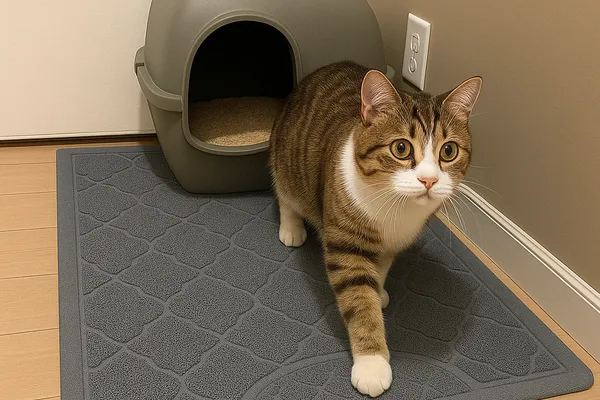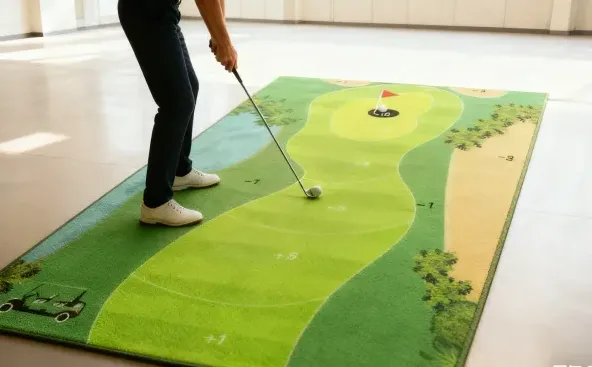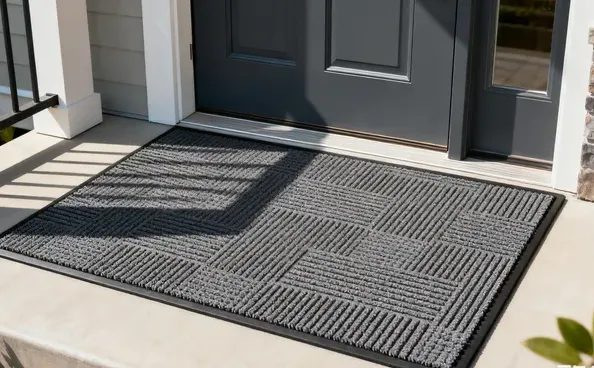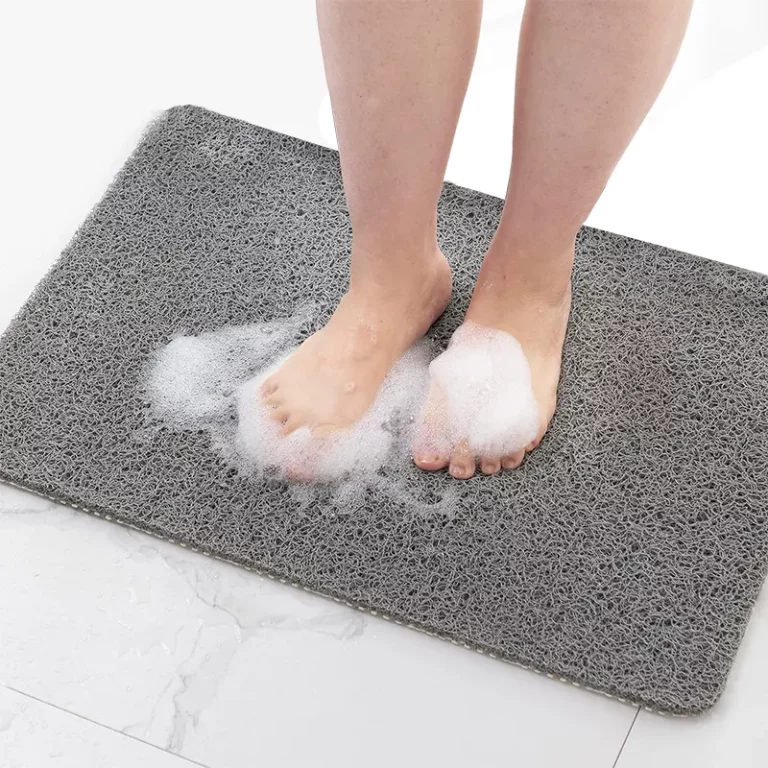How to Stop Your Chair Mat from Sliding on Hardwood Floors: Easy Fixes and Tips
Is your chair mat sliding across your hardwood floor every time you move your office chair? It’s not only frustrating but can also cause scratches and damage to your beautiful wood floor. In this guide, we’ll explore effective ways to keep your chair mat in place, prevent unwanted sliding, and protect your flooring. Read on to discover simple solutions that will make your workspace safer and more comfortable.
Table of Contents
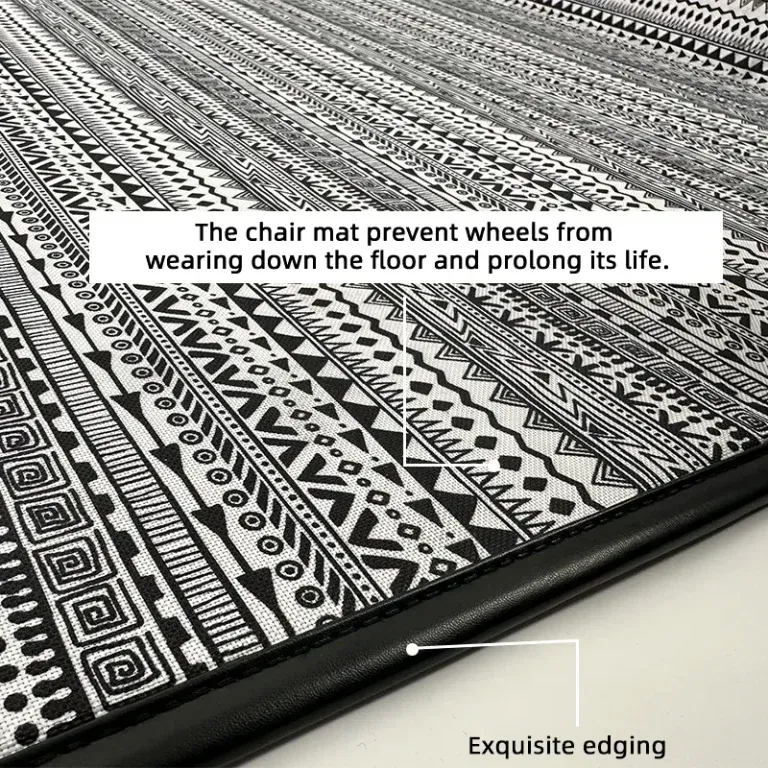
Why Does Your Chair Mat Slide on Hardwood Floors?
Chair mats are designed to protect your flooring and make rolling your chair easier. However, on smooth surfaces like hardwood floors, mats can often slide around due to a lack of grip. Factors contributing to this issue include:
- Smooth Floor Surface: Hardwood floors have a slick finish that reduces friction.
- Lightweight Mats: Thin or lightweight mats may not stay in place.
- No Non-Slip Backing: Mats without a non-slip bottom don’t grip the floor.
- Frequent Movement: Constant chair movement can shift the mat.
Understanding why your chair mat slides is the first step toward finding an effective solution.
Assessing Your Chair Mat and Floor Type
Before choosing a fix, it’s essential to assess both your chair mat and floor type.
Check Your Chair Mat
- Material: Is it plastic, PVC, or another material?
- Backing: Does it have a rubberized or textured bottom?
- Size and Thickness: Thicker mats may stay in place better.
Evaluate Your Floor
- Hardwood Floor: Smooth and can be prone to scratches.
- Laminate Flooring: Similar issues as hardwood.
- Tile or Vinyl: May require different solutions.
Knowing your mat and floor specifics helps in selecting the best method to prevent sliding without causing damage.
How to Keep a Chair Mat from Sliding: Top Solutions
There are several effective ways to keep your chair mat from sliding on hardwood floors. We’ll explore the top solutions, including products designed to increase grip and DIY methods.
Top Methods
- Non-Slip Pads or Grippers
- Double-Sided Carpet Tape
- Hook and Loop Fasteners
- Silicone Caulk Application
- Choosing the Right Mat
Let’s delve into each method to understand how they work.
Using Non-Slip Pads or Grippers
Non-slip pads are an excellent way to add friction between your chair mat and the floor.
How It Works
- Placement: Attach non-slip pads to the underside of the mat.
- Materials: Typically made of rubber or silicone.
- Grip Enhancement: Increases traction to prevent sliding.
Benefits
- Easy Fix: Simple to apply and remove.
- Protects Floor: Won’t damage hardwood floors.
- Cost-Effective: Inexpensive solution.
Steps to Apply
- Clean the Mat: Ensure the underside is free from dust.
- Attach Pads: Place pads at each corner and along the edges.
- Position Mat: Lay the mat on the floor and press down firmly.
By using non-slip grippers, you can keep your chair mat securely in place without any adhesives that might leave residue on the floor.
Applying Double-Sided Carpet Tape
Double-sided carpet tape is a strong adhesive solution to prevent your mat from moving.
Pros and Cons
- Pros:
- Strong Grip: Keeps the mat firmly in place.
- Easy to Use: Simple application process.
- Cons:
- May Leave Residue: Adhesive could stick to the floor.
- Potential Floor Damage: Not suitable for all hardwood finishes.
Application Process
- Test a Small Area: Ensure the tape won’t damage your floor.
- Clean Surfaces: Both the mat and floor should be clean.
- Apply Tape: Attach tape to the underside edges of the mat.
- Position Mat: Press the mat onto the floor, securing the tape.
Tips
- Use High-Quality Tape: Opt for tape that won’t react with your floor finish.
- Limited Use: Consider this for mats in high-traffic areas where other solutions haven’t worked.
While double-sided carpet tape can be effective, caution is advised to protect your hardwood floor from potential adhesive damage.
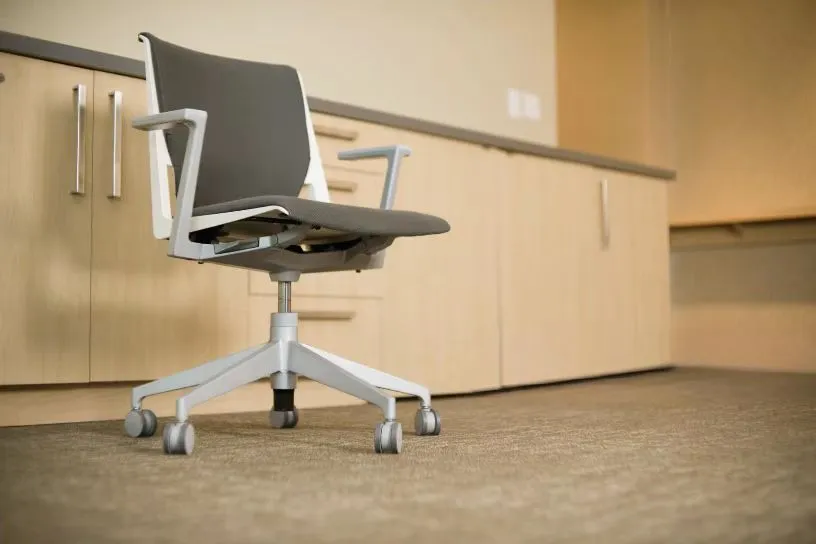
Hook and Loop Fasteners: Do They Work?
Hook and loop fasteners (like Velcro) offer a reusable solution to keep your chair mat stationary.
Implementation
- Attach One Side to Mat: Use the adhesive side to stick to the mat.
- Attach Other Side to Floor: Securely fix the corresponding piece to the floor.
- Align and Press: Place the mat so the hook and loop connect.
Advantages
- Non-Permanent: Easy to remove without residue.
- Strong Hold: Keeps the mat from moving around.
- Reusability: Can be repositioned as needed.
Considerations
- Floor Impact: Ensure the adhesive won’t damage the wood floor.
- Cleaning: Periodically check to keep the fasteners free from dust.
This method provides a balance between a strong grip and floor safety, making it a viable option for many.
Silicone Caulk: A DIY Non-Slip Solution
Applying silicone caulk dots to the underside of your mat creates a custom non-slip surface.
How to Apply
- Clean the Mat: Wipe down the underside thoroughly.
- Apply Caulk Dots: Squeeze small dots or lines of silicone in a grid pattern.
- Let It Dry: Allow the silicone to cure completely (usually 24 hours).
- Place Mat: Lay the mat on the floor; the silicone will grip the surface.
Benefits
- Custom Grip: You control where and how much silicone to use.
- No Adhesives on Floor: The silicone grips without sticking to the floor.
- Affordable: Inexpensive and readily available materials.
Warnings
- Curing Time: Use the mat only after the silicone has fully dried.
- Test First: Ensure the silicone won’t react with your floor finish.
This DIY method is a creative way to enhance the grip of your chair mat without investing in new products.
Choosing the Right Chair Mat for Hardwood Floors
Selecting a chair mat specifically designed for hard floors can prevent sliding and protect your flooring.
Features to Look For
- Non-Slip Backing: Mats with a rubberized or textured underside.
- Material: Durable materials like PVC that won’t scratch the floor.
- Thickness: Heavier mats are less likely to move.
Recommended Options
Consider mats like our High-Quality Anti-Slip PVC Floor Rolls that provide excellent grip and floor protection.
Benefits
- Engineered for Hard Floors: Specifically made to stay put on wood and laminate.
- Protects from Scratches: Prevents chair wheels from damaging the floor.
- Improved Aesthetics: Complements your office décor.
Investing in the right mat is a proactive way to solve sliding issues and care for your hardwood floor.
Preventing Office Chairs from Rolling Away
Sometimes, the problem isn’t just the mat but also the office chair rolling too freely.
Solutions
- Use Soft Casters: Replace hard plastic wheels with rubber ones.
- Add a Rug: Place a non-slip rug under the mat for added stability.
- Adjust Chair: Lower chair height to reduce movement.
Additional Products
- Rubber Furniture Pads: Attach to furniture legs to keep them in place.
- Non-Slip Rug Pad: Place under area rugs to prevent movement.
By addressing the chair’s mobility, you enhance overall stability and reduce mat movement.
Additional Tips to Protect Your Hardwood Floor
Keeping your floor safe involves more than just securing your chair mat.
Protecting Strategies
- Regular Cleaning: Dust and debris can cause scratches.
- Avoid Harsh Adhesives: Use products that won’t leave residue.
- Use Furniture Pads: Protects floors from dents and scratches.
- Rotate Mats and Rugs: Even out wear over time.
Related Products
- Non-Slip Stair Mats: Keep other areas of your home safe.
- PVC Printed Door Mats: Enhance grip at entryways.
Proper care extends the life of your flooring and maintains its appearance.
Frequently Asked Questions
Can I Use Rug Grippers on My Chair Mat?
Yes, rug grippers can be used to add grip to your chair mat. Ensure they are suitable for hard floors to avoid damage.
Will Double-Sided Tape Damage My Hardwood Floor?
Some adhesives may leave residue or react with floor finishes. Always test a small area first and use tape designed for hardwood floors.
Is There a Specific Chair Mat for Hardwood Floors?
Yes, there are mats specifically designed with non-slip backings for hard surfaces. Materials like PVC are often used.
How Do I Prevent My Office Chair from Sliding Without a Mat?
You can replace chair casters with soft rubber wheels or use a non-slip rug under the chair area.
What’s the Best Way to Clean Under the Chair Mat?
Regularly lift the mat and clean both the floor and the underside to prevent dust and debris buildup that can cause slipping.
Conclusion
A sliding chair mat on a hardwood floor is more than a nuisance—it can lead to scratches and decrease your workspace efficiency. By implementing the strategies outlined above, such as using non-slip pads, double-sided tape, or choosing the right chair mat, you can keep your mat securely in place. Remember to consider the impact on your floor and choose solutions that won’t cause damage.
For durable and non-slip matting solutions, explore our range of products like the Non-Slip PVC Loop Coil Plain Indoor Mat and protect your flooring today.
Key Takeaways
- Identify the Cause: Understand why your chair mat is sliding.
- Use Non-Slip Solutions: Apply pads, grippers, or silicone to increase friction.
- Be Cautious with Adhesives: Test any adhesive products to avoid floor damage.
- Choose the Right Mat: Invest in a mat designed for hardwood floors.
- Protect Your Floor: Regular maintenance and protective measures extend floor life.
- Consider Chair Mobility: Adjust your office chair to reduce movement.
- Regular Cleaning: Keep both the mat and floor clean to maintain grip.
By following these tips, you can enjoy a stable, safe, and efficient workspace without worrying about your chair mat sliding across the floor.

